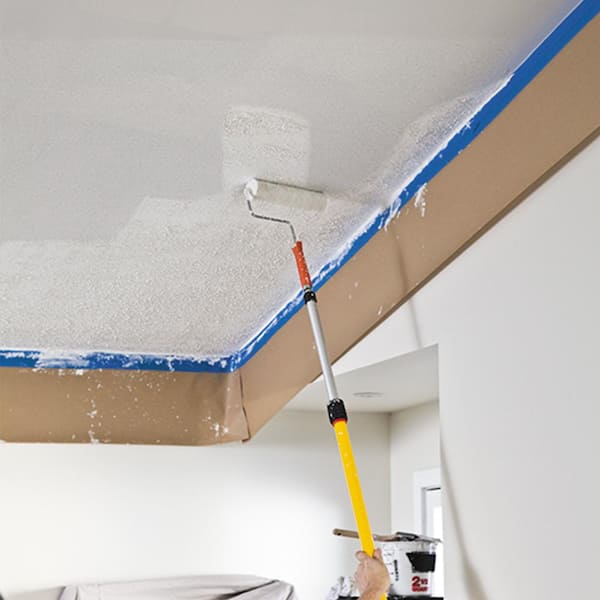Painting your ceiling can transform your room. But can ceiling paint be tinted? The answer is yes. You can tint ceiling paint. Let’s dive into the details.
Why Tint Ceiling Paint?
Tinting ceiling paint offers several benefits. Here are some reasons to consider:
- Custom Color: Tinting allows you to match the ceiling with your room’s theme.
- Hides Imperfections: A tinted ceiling can hide flaws better than white paint.
- Creates Ambiance: Different colors can set different moods.

Credit: blog.sherwin-williams.com
How to Tint Ceiling Paint
Tinting ceiling paint is not hard. Follow these simple steps:
- Select a Base Paint: Choose a high-quality ceiling paint as your base.
- Pick a Tint Color: Decide on the color you want to add.
- Mix the Paint: Pour the tint into the base paint and stir well.
- Test the Color: Apply a small amount to a hidden area to check the color.
- Paint the Ceiling: Once satisfied, start painting your ceiling.
Types of Paint for Tinting
Not all paints are the same. Here are some common types of ceiling paints:
| Paint Type | Benefits |
|---|---|
| Flat Paint | Hides imperfections, non-reflective. |
| Eggshell Paint | Slightly reflective, easier to clean. |
| Satin Paint | More durable, slightly glossy. |

Credit: www.homedepot.com
Choosing the Right Color
Picking the right color is crucial. Here are some tips to help you:
- Light Colors: Make rooms look bigger and brighter.
- Dark Colors: Create a cozy and intimate feel.
- Neutral Colors: Versatile and timeless.
Always consider the room’s purpose and existing decor. Test different shades before making a final decision.
Tools You Need
Having the right tools makes the job easier. Here is a list of essential tools:
- Paint roller and tray
- Paintbrush
- Stir sticks
- Drop cloths
- Painters tape
Step-by-Step Painting Guide
Follow this guide to paint your ceiling:
- Prepare the Room: Cover furniture and floor with drop cloths.
- Clean the Ceiling: Remove dust and cobwebs.
- Apply Painters Tape: Protect edges and corners.
- Mix the Paint: Stir the tinted paint thoroughly.
- Start with Edges: Use a brush to paint the edges first.
- Use a Roller: Paint the large areas with a roller.
- Apply Second Coat: If needed, apply a second coat after the first dries.
Common Mistakes to Avoid
Avoid these mistakes for a perfect finish:
- Not Preparing the Surface: Always clean and prime the ceiling.
- Skipping the Tape: Use painters tape for clean edges.
- Using the Wrong Tools: Choose the right brushes and rollers.
- Not Mixing Paint: Stir the paint well to avoid uneven color.
Frequently Asked Questions (FAQs)
Here are some common questions about tinting ceiling paint:
- Can I use regular wall paint for the ceiling?
- No, ceiling paint is formulated differently. It is thicker and less drippy.
- How much tint should I add?
- Add a little at a time. You can always add more, but you can’t take it out.
- Can I tint paint myself?
- Yes, but professional tinting ensures a perfect match.
- How long does tinted ceiling paint take to dry?
- It usually takes 24 hours to dry completely.
Frequently Asked Questions
Can Ceiling Paint Be Tinted?
Yes, ceiling paint can be tinted to match or contrast with your wall colors.
How To Tint Ceiling Paint?
You can add colorant at a paint store to achieve the desired shade.
Why Tint Ceiling Paint?
Tinting ceiling paint can enhance a room’s aesthetic, creating a cohesive or contrasting look.
Is Tinted Ceiling Paint Effective?
Tinted ceiling paint can effectively hide imperfections and add depth to a room.
Conclusion
Tinting ceiling paint is a great way to enhance your room. It allows for creativity and customization. Follow the steps and tips in this guide. You will achieve a beautiful and professional finish.